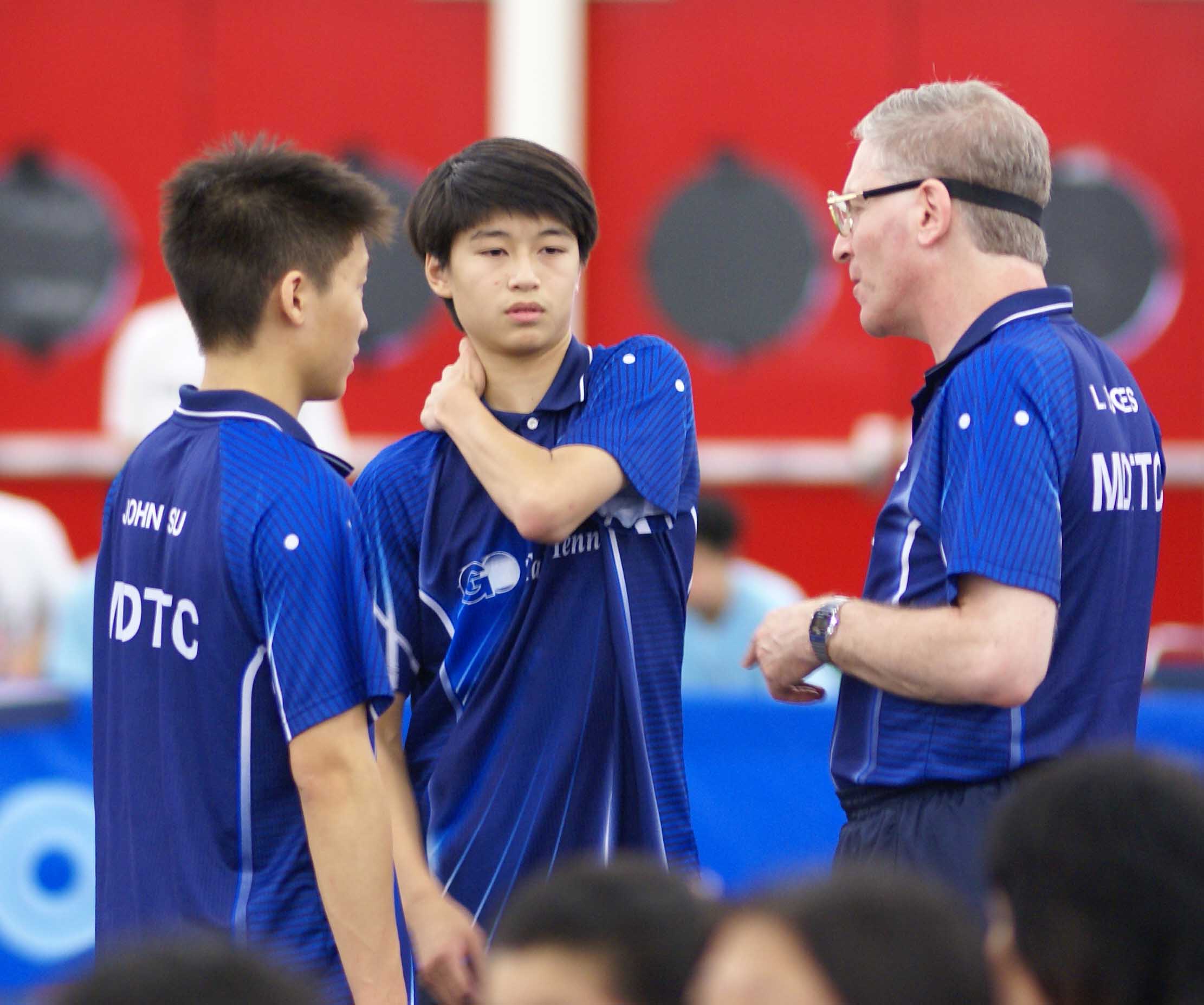(by Larry Hodges)
Doubles Signals and Why You Should Use Them
When you serve in singles, you know what serve you are about to do, and so can be ready for the possible returns off that serve. Imagine playing where you had no idea what serve you did, and so couldn’t prepare for the follow-up. Pretty awkward, right?
That’s what happens when you don’t signal your serve to your partner in doubles. He has no idea if you are serving short backspin – and so must be ready for a push or flip; topspin, and so should be ready for a drive; or deep, and so must be ready for a loop.
Sometimes the server’s partner signals the serve. After all, he’s the one who has to follow up, so many top doubles teams do that. Or if one of the players is more experienced than the other, then he might signal all the serves, whether he’s serving or not.
Sometimes you don’t have to signal the serve; you can just discuss it quietly with your partner. But that can lead to stalling, so you have to limit that. Which is why you should have signals.
Make sure to use serves that match your partner’s game, not yours. If you aren’t sure what types of serves he wants, ask him. The most common serving pattern in doubles is mixing in short backspin and no-spin serves (very low to the net), often toward the middle of the table to cut off the wide angle to the forehand. At lower levels, topspin serves and deep serves may work, but at higher levels they usually get attacked.
There are different signaling systems, but here’s the simplest, which I’ve used for over forty years. You do the signals under the table, so your partner can see it, but not your opponents.
- Backspin: point down with index finger.
- Topspin: point up with thumb or index finger.
- Sidespin: point sideways in the direction of the sidespin.
- Combinations, such as sidespin-backspin: point in both directions.
- No-spin: make a fist.
- Long serves: It’s assumed in doubles that you will serve short, so the opponent can’t loop, but if you are serving deep, point at the opponents.
Some doubles teams even signal the direction of their receive (pointing under the table), so their partner can be ready. I don’t normally do this as I often change the direction of my receive as I see the opponent’s move, but I’ve had partners who do this, and it greatly helps me, especially since I’m always looking to attack with my forehand, and it makes it a lot easier to do so when you know where your partner’s receive is going to be.
For original article, please click here























